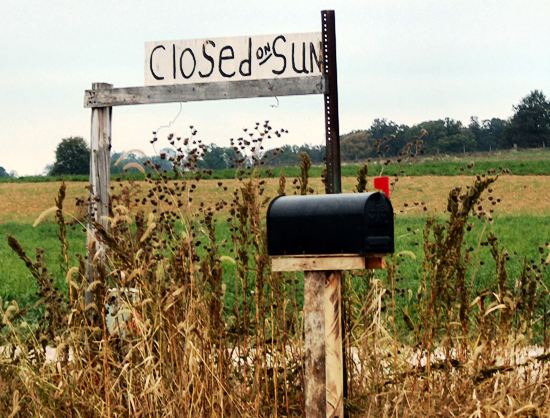The Amish of Parke and Wayne Counties, Indiana
Indiana is an interesting place when it comes to Amish diversity.
In the Hoosier state, you will find communities of New Order, Swartzentruber, ‘Swiss’, and of course, ‘standard’ Old Order Amish.
One relatively new influence in the state has been the presence of two settlements of Lancaster Amish, which both formed in the 1990’s.
The two settlements, on opposite sides of the state (Parke and Wayne Counties), number just a handful of church districts each.
The most obvious tip-offs that you are not in a typical midwestern Amish community are the gray-topped buggies, the style of clothing, and the last names. Stoltzfuses abound.
Lancaster Amish have typically formed daughter settlements closer to home, ie, in other parts of Pennsylvania, or in neighboring states like Maryland.
One attraction of Indiana is the relatively inexpensive farmland.
Conventional wisdom has it that a Lancaster farmer can sell his home farm and buy several similar-sized farms in these areas. That is a big attraction for the highly farm-oriented Lancaster Amish. When they move, entrepreneurial Amish also bring their trades along, setting up small businesses, including stores, buggy makers, and woodworking shops (read more on Amish furniture in Indiana).
Steven Nolt and Thomas Meyers’ book An Amish Patchwork is an interesting look at Old Order diversity in Indiana. It also examines the Old Order Mennonite presence in the state. Recommended read.
For an overview of Amish in the Hoosier State, try the Indiana Amish state guide.




The Northeast is so heavily settled for the most part that if you’re looking for more land, you have to be prepared to pay. And in some cases, it just isn’t there for you to buy. It seems like for the Lancaster Amish, resettling out of the area comes with intrinsic benefits: their old land will fetch a high price, their new area will probably allow their children to settle nearby with farms of their own, and they open up opportunities for people who want to stay in Lancaster but might not have enough land.
It seems like moving to a new area is often the best choice for the Amish in PA with the price of land and crowding there.
Thanks for the reference to that book. Sounds like what I need for more riding in Indiana this summer. The copy in my university’s library is now on its way to me.
Good points CC and michelle,and spokesrider I am glad to hear it, I love the book.
Lancaster has had a lot of emigration especially when compared to the other two big settlements, Holmes Co and northern Indy. Population pinch.
An Amish Patchwork is an excellent book.
I have friends that moved from Bird-in-Hand, Lancaster County to Wayne County, IN in the mid 1990s. They moved there for the reasons you all specified. Since moving however, two of their sons and their daughter and their families moved back to Lancaster County. One son is farming the old homestead, but has turned it all organic. The others are in non-farming occupations.
Another very readable book on an interesting aspect of Amish life is Growing Up Amish: The Teenage Years by Stevick. He claims to have visited dozens of Amish settlements in PA, Ohio, and Indiana, and he seems to have an unusually wide grasp of Amish life in various locales. A good read.